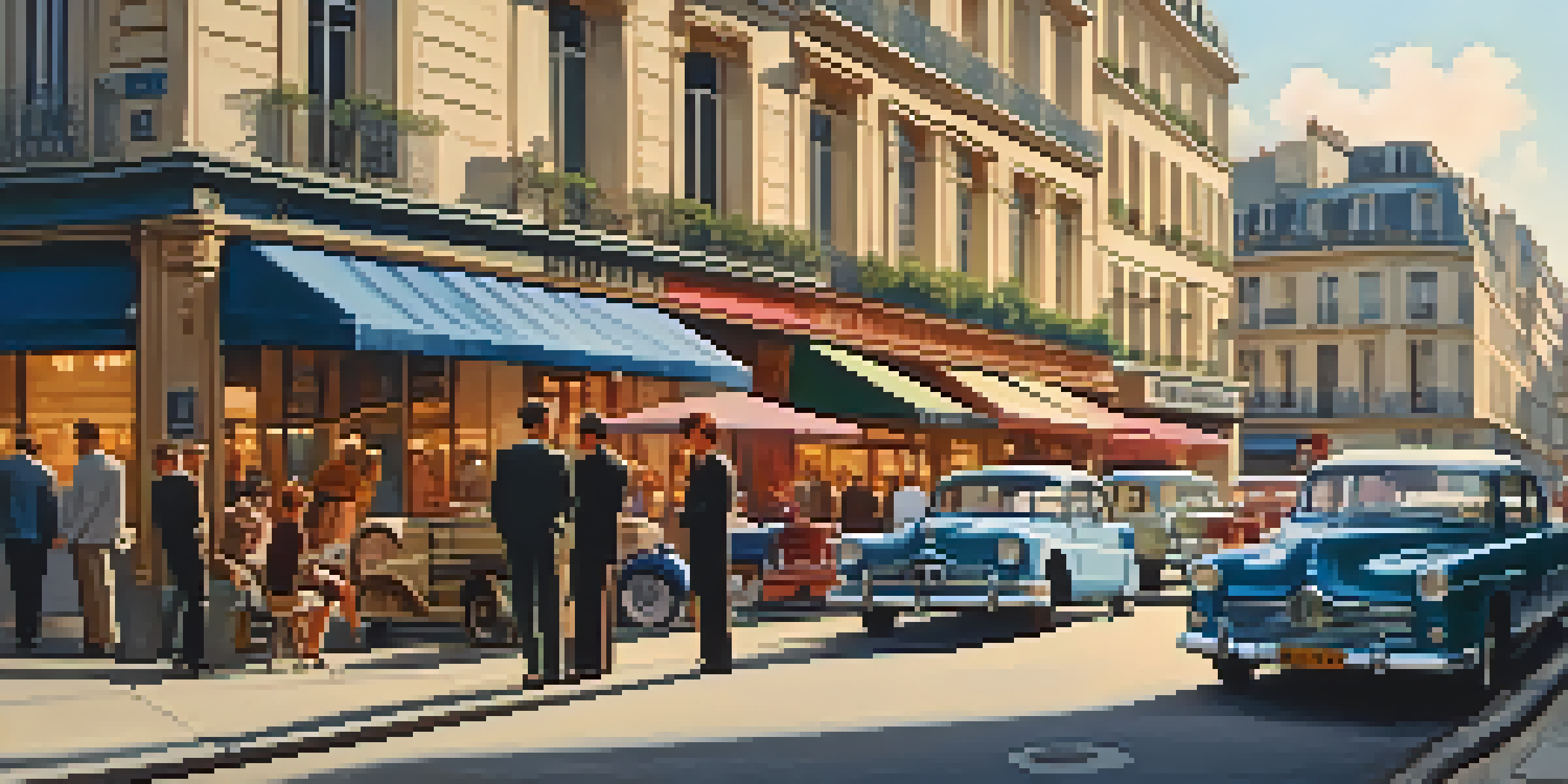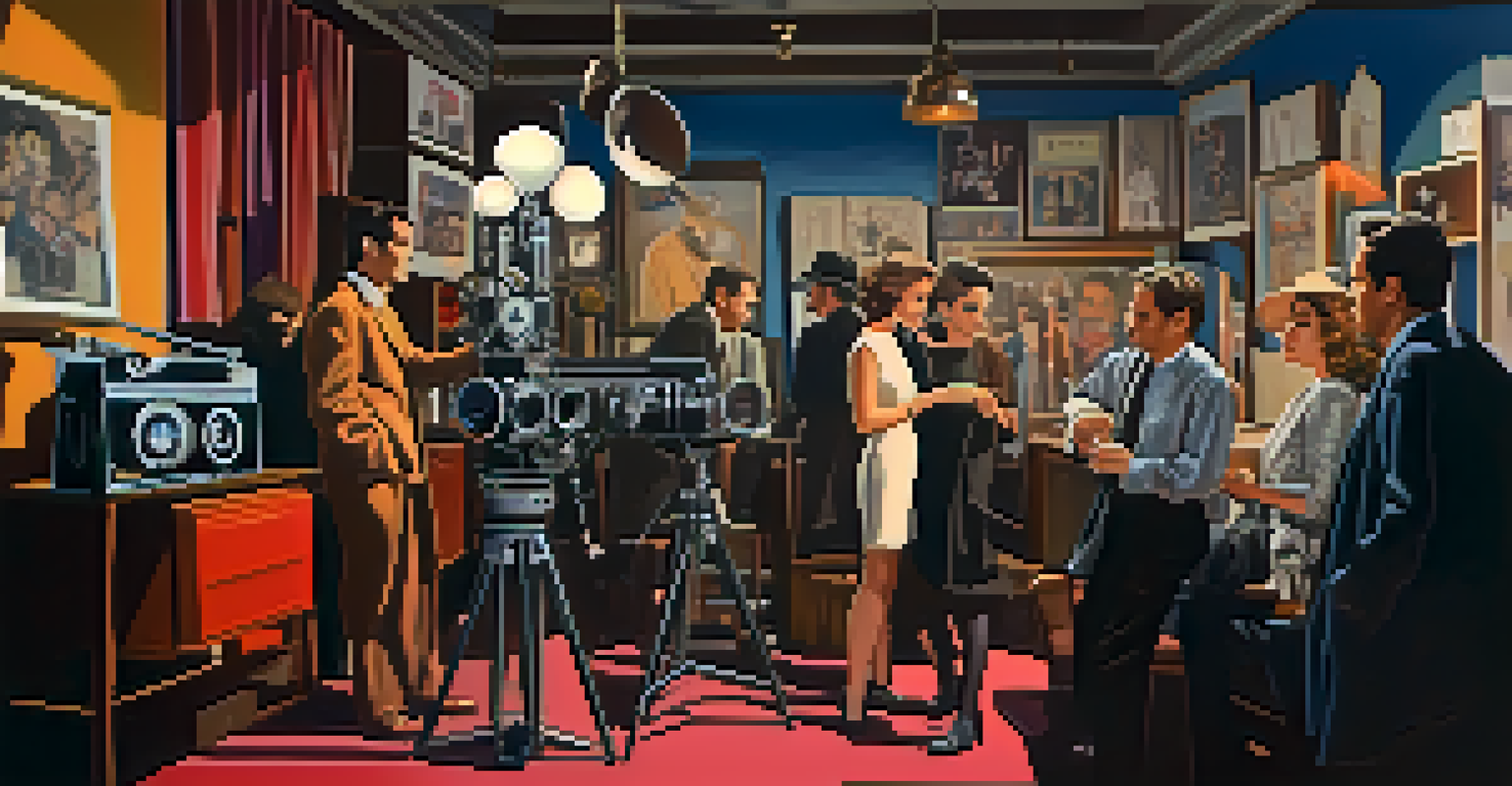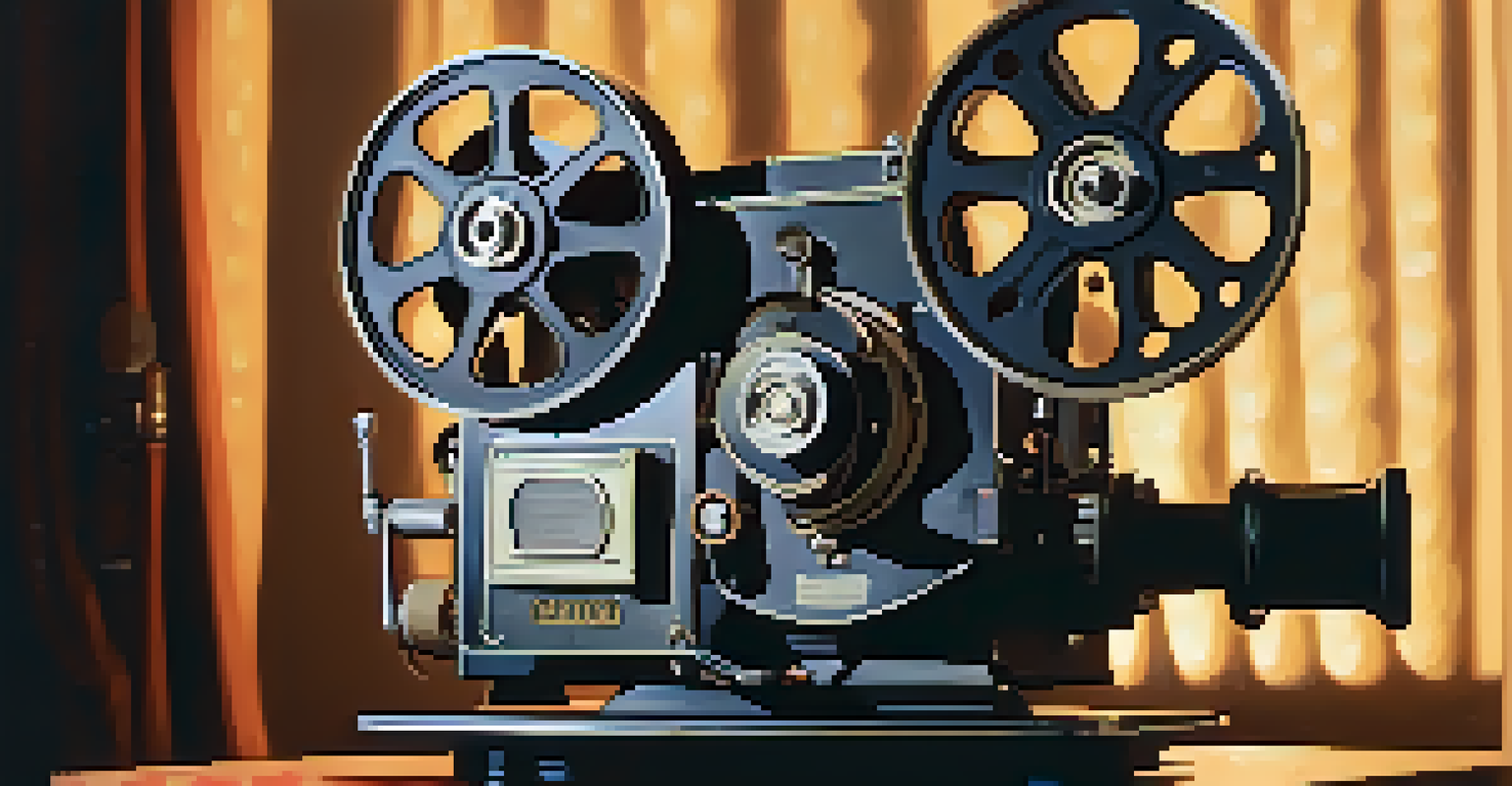The Impact of the French New Wave on Global Cinema Trends

Introduction to the French New Wave Movement
The French New Wave, or 'La Nouvelle Vague,' emerged in the late 1950s, revolutionizing the film industry. This cinematic movement was characterized by its experimental techniques and a fresh approach to storytelling that broke away from traditional norms. Pioneered by directors like François Truffaut and Jean-Luc Godard, it emphasized personal expression and innovative narratives. As a result, it laid the groundwork for modern filmmaking aesthetics that influenced filmmakers worldwide.
The French New Wave is not just a movement; it's an attitude.
At the heart of the French New Wave was a desire to challenge the status quo of filmmaking. Directors sought to capture the complexities of human experience in a more relatable and raw manner, often using on-location shooting and natural lighting. This departure from studio-bound productions allowed for a more authentic representation of life, resonating deeply with audiences. The movement's focus on individuality and creativity became a catalyst for future filmmakers around the globe.
In essence, the French New Wave was not merely a cinematic style; it was a cultural shift. By embracing bold storytelling and unconventional techniques, these filmmakers inspired a generation of artists to break free from conformity. Their influence still echoes in contemporary cinema, reminding us of the power of innovation and the importance of storytelling in human connection.
Key Characteristics of French New Wave Cinema
The French New Wave is recognized for its distinctive characteristics that set it apart from earlier cinematic styles. One notable feature is the use of jump cuts, which disrupt the continuity of time and space, creating a sense of immediacy and spontaneity. This style invites audiences into the film's world, making them active participants in the narrative. Such techniques were revolutionary at the time and have since become staples in modern filmmaking.

Another hallmark of this movement was its focus on character-driven narratives rather than elaborate plots. Filmmakers often drew inspiration from their own lives, resulting in stories that felt personal and relatable. This emphasis on character over plot allowed for deeper emotional connections with viewers, as audiences could see reflections of their own experiences in the films. It was a departure from the grandiose storytelling of Hollywood and paved the way for more intimate cinema.
Revolutionized Filmmaking Techniques
The French New Wave introduced innovative techniques like jump cuts and handheld cameras, transforming storytelling and audience engagement.
Additionally, the French New Wave celebrated spontaneity and improvisation, with many directors encouraging actors to ad-lib their dialogue. This choice led to a more organic feel, capturing the nuances of real-life interactions. By embracing this approach, filmmakers created a sense of authenticity that resonated with audiences, fostering a connection that extended beyond the screen.
Influence on Independent Cinema Worldwide
The impact of the French New Wave extends far beyond France, significantly shaping independent cinema globally. Filmmakers in countries like the United States and Japan were inspired to adopt similar techniques, prioritizing innovative storytelling and character development. The movement encouraged a generation of directors to challenge conventional filmmaking practices, ultimately leading to the rise of independent cinema in the 1960s and 70s.
I think that the French New Wave was the most important thing to happen in cinema, for one simple reason: it made the director an author.
Directors such as Martin Scorsese and Steven Spielberg have cited the French New Wave as a major influence on their work. The emphasis on personal storytelling and artistic freedom resonated with many filmmakers who sought to explore their own narratives outside the confines of mainstream Hollywood. This newfound creativity allowed for a diverse range of films to emerge, reflecting various cultural perspectives and experiences.
Moreover, the French New Wave's focus on breaking traditional narrative structures inspired countless filmmakers to experiment with form and content. This spirit of innovation paved the way for the emergence of genres like the art film and the mockumentary, further enriching the cinematic landscape. Today, independent films continue to challenge conventions, showcasing the lasting legacy of the French New Wave.
Cinematic Techniques Pioneered by the French New Wave
Several groundbreaking cinematic techniques were introduced by the French New Wave, forever altering the landscape of filmmaking. One of the most significant was the use of handheld cameras, which allowed for greater mobility and a more immersive experience. This technique not only captured authentic performances but also provided a sense of intimacy that resonated with audiences, drawing them closer to the characters' emotional journeys.
The movement also popularized the practice of breaking the fourth wall, where characters directly address the audience. This technique created a unique connection between viewers and the film, making them acutely aware of the artifice of cinema. By blurring the lines between fiction and reality, filmmakers encouraged audiences to engage critically with the narrative, fostering a deeper understanding of the themes being explored.
Influence on Global Independent Cinema
The movement inspired filmmakers worldwide to prioritize character-driven narratives and artistic freedom, shaping the rise of independent cinema.
Additionally, nonlinear storytelling became a hallmark of French New Wave films. By playing with time and chronology, directors crafted narratives that mirrored the complexities of human memory and thought. This innovative approach not only captivated audiences but also challenged their expectations of conventional storytelling, paving the way for future filmmakers to explore similar techniques.
Cultural Reflections in French New Wave Films
The French New Wave was deeply intertwined with the cultural and social upheaval of the 1960s. Filmmakers used their art to comment on contemporary issues, from existentialism to youth rebellion. By addressing these themes, they captured the spirit of a generation grappling with rapid change, resonating with audiences both in France and around the world. This cultural relevance added depth to their films, making them timeless classics.
Additionally, the movement often explored the complexities of love and relationships, frequently depicting the struggles of modern romance. Characters were portrayed as flawed individuals, navigating the uncertainties of life and love. This authenticity made the narratives relatable, allowing viewers to see their own experiences reflected on screen. It was a departure from the idealized portrayals of love often seen in earlier films.
Moreover, the French New Wave challenged societal norms and conventions, particularly regarding gender roles and sexual liberation. Female characters were often portrayed with greater complexity and agency, reflecting the changing dynamics of society. This progressive representation paved the way for future filmmakers to continue exploring diverse and nuanced portrayals of women in cinema.
Legacy of the French New Wave in Modern Filmmaking
The legacy of the French New Wave can be seen in the works of contemporary filmmakers who draw inspiration from its innovative spirit. Directors like Quentin Tarantino and Sofia Coppola have embraced the movement's emphasis on personal storytelling and stylistic experimentation. By incorporating elements of the French New Wave into their films, they honor its influence while also pushing cinematic boundaries further.
Furthermore, the French New Wave's impact on film editing and pacing is evident in modern cinema. The use of quick cuts, unconventional transitions, and a focus on rhythm can be traced back to the techniques pioneered by this movement. These stylistic choices continue to shape the way stories are told, allowing filmmakers to create dynamic and engaging narratives that resonate with today's audiences.
Cultural Reflections in Film
French New Wave films addressed contemporary social issues and complex human experiences, making them deeply relevant and relatable to audiences.
In essence, the French New Wave has become a touchstone for filmmakers seeking to challenge conventions and explore new artistic avenues. Its influence can be felt across genres and styles, reminding us that the pursuit of creativity and originality remains at the heart of filmmaking. As new generations of directors emerge, the spirit of the French New Wave lives on, inspiring future storytellers to continue breaking barriers.
Conclusion: The Enduring Impact of the French New Wave
In conclusion, the French New Wave has left an indelible mark on global cinema, transforming the way stories are told and experienced. Its innovative techniques and bold narratives continue to inspire filmmakers around the world, encouraging them to explore their own voices and push boundaries. This movement not only reshaped the landscape of filmmaking but also fostered a greater appreciation for the art of cinema as a means of personal expression.
By embracing spontaneity, authenticity, and character-driven storytelling, the French New Wave challenged audiences to engage with films on a deeper level. Its influence can still be felt today, as filmmakers strive to capture the complexities of human experience in relatable and innovative ways. The movement's legacy serves as a reminder of the power of storytelling and the importance of artistic freedom in the world of cinema.

As we reflect on the impact of the French New Wave, it's clear that its spirit will continue to inspire future generations of filmmakers. By honoring its principles and embracing creativity, the art of filmmaking will remain a vibrant and evolving medium, capable of reflecting the ever-changing tapestry of human experience.